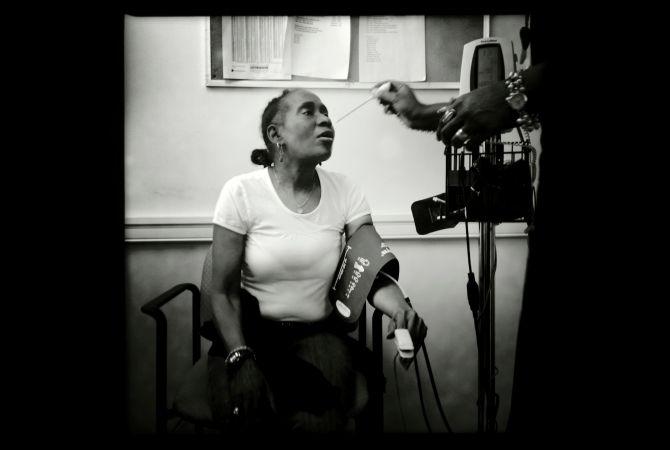Turning Point: DC’s AIDS detective
Charlotte Pearson attends a day program at the Robinson Clinic in Washington, DC. It’s part of employee D.D. Rogers' job to increase medication adherence in her more vulnerable patients.
WASHINGTON — On his first day as chair of biostatistics and epidemiology at George Washington University in 2005, Alan Greenberg found himself sitting in the office of Gregg Pane, then the director of DC’s Department of Health.
“I was just hours on the job,” said Greenberg.
The struggling department had gathered no reliable data on HIV infection rates in nearly five years, and Pane asked Greenberg if he and the university would use their expertise to help improve the process known as "AIDS surveillance" in the city.
It was no coincidence that they chose Greenberg. His experience spanned globally from the beginning of the AIDS epidemic.
As a young resident in the early 1980s, he saw some of the first cases of HIV at St. Vincent’s Community Hospital in New York City’s Greenwich Village. Greenberg, an internist, quickly shifted his specialty to address the outbreak at home and abroad.
His career in Africa would span some twenty years, first with a fellowship in West Africa, and then as a disease detective for the Centers for Disease Control (CDC) in Zaire, now the Democratic Republic of Congo. By the time he was set to come home in 2005, Greenberg had become one of the CDC’s lead researchers.
His career came full circle when he decided to return to Washington, DC, the place where he had studied medicine some thirty years prior.
“While I was [abroad], I had become aware of the very serious epidemic in our nation’s capital,” said Greenberg.
The situation was dire. There was a sense of an intensifying epidemic, but the city wavered. Energy once seen at the beginning of the epidemic had grown stagnant.
Greenberg dove into his work full-force, developing partnerships between policymakers, researchers, and communities to scale up testing around the city — an example he borrowed from the President's Emergency Plan for AIDS Relief (PEPFAR)’s successful approach in foreign countries.
But as he and his team got underway, they discovered what Greenberg called the city’s lowest point on fighting HIV/AIDS. In late August 2006, several boxes filled with records of 2,000 to 3,000 unexamined HIV and AIDS cases were found in a closet at the health department — an example of how disorganized the program had been.
“Most people would not have been able to make that level commitment to develop a surveillance department and put together an entire system,” said A. Toni Young, one of Greenberg’s community partners.
The seminal moment came in 2007. After two years of work in the field, the department’s first HIV/AIDS report was published, ending the five-year drought of HIV data.
The new data confirmed what many had suspected. The District of Columbia had the highest rate of HIV/AIDS infections in the country.
“When the prevalence rate was picked up the press, people sort of realized the extent of the epidemic and it raised the awareness,” said Greenberg. “It made it more urgent to do something.”
The critical information galvanized the public health community to respond to the epidemic. It also rid DC of its reputation as a scientific backwater. Today, the George Washington University HIV/AIDS Institute and Washington DC Developmental Center for AIDS Research — both started by Greenberg in the last seven years — have brought the city to the forefront.
In a recent interview, Greenberg concluded, "I would like to see the US continue fighting this public health catastrophe, making the same effort in our local communities as we do globally. Only with an increased partnership between policymakers, researchers, and communities will we see a result in the decreased number of incidences of HIV infections."
GlobalPost's reporting on global heath is made possible in part through a partnership with the Henry J. Kaiser Family Foundation as part of its U.S. Global Health Policy program.
This story is presented by The GroundTruth Project.
